Science tells us that films that make us cry might be better stressbusters when compared to comedy even in case of animation.
Animated films remain attractive no matter what making them easy to relate. They have been a part of us in our journey since childhood and shaped us into what who we grow up to be.
Marvelous Vidoes has compiled a list that will take you down the sweet memory lane and introduce/re-introduce some films that will help you reconnect with your younger, happier self and make you appreciate the life that you live.
Watership Down (1978)
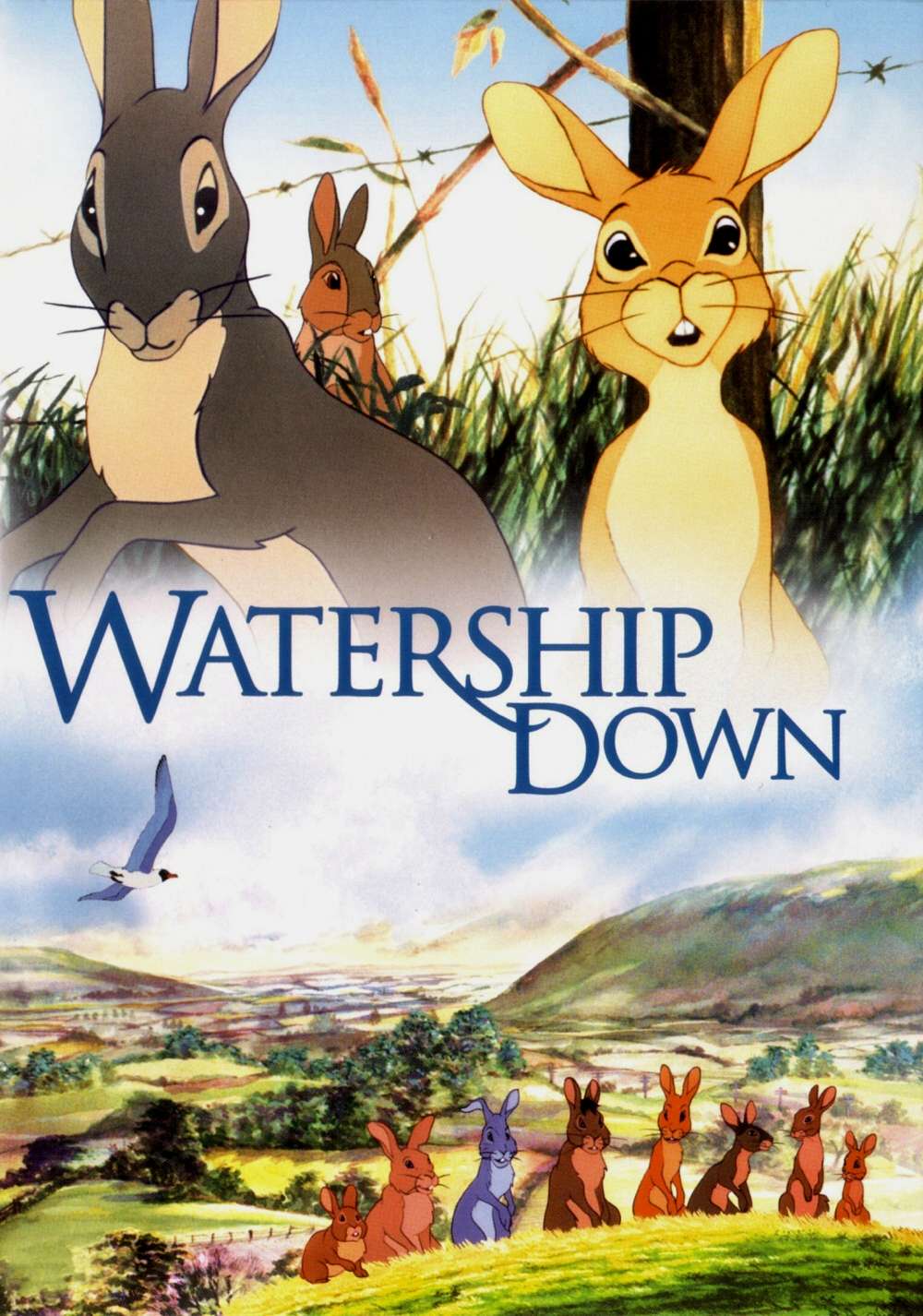
Watership Down is narrated from an anthropomorphic angle focusing on Rabbits facing extinction in the English countryside of Sandleford. This had been forseen by Fiver, a prophetic rabbit. Fiver and his older brother Hazel set off to visit the Chief to warn of the doom and to empty the borrows buts their pleas fall on deaf ears.
The brothers start gathering all Rabbits ready to believe them and take them to Watership Down. However it’s not an easy journey where they will have to face predators and betrayal from some fellow rabbits. Will life be easy even if they make it to Watership Down? It’s a story of brotherhood, resilience, and love.
Directed by Martin Rose, this film as an adaptation of Richard Adam’s novel of the same name. The plot remains true to the story retaining its emotional appeal. It’s a tale about prey animals that have a thousand enemies and a plethora of problems.
The fact that humans don’t care about the very ecology they depend on is indirectly the film’s crux. It is told from the perspective of a few helpless rabbits who become each others shield and sword.
Rosen’s kept the animation grounded in reality, hiring a helicopter to make an ariel survey of Sandleford and its nearby areas for the animators to reference. This unfathomable effort is reflected in the content. Watership Down begins with the graphic mauling of rabbits in Fiver’s dream, and the story takes you on a sentimental rollercoaster ride thereafter. It is nothing like a children’s film.
We assure you that you will find resemblance with people around you in all the characters, or maybe you will find yourself.
The Plague Dogs (1982)
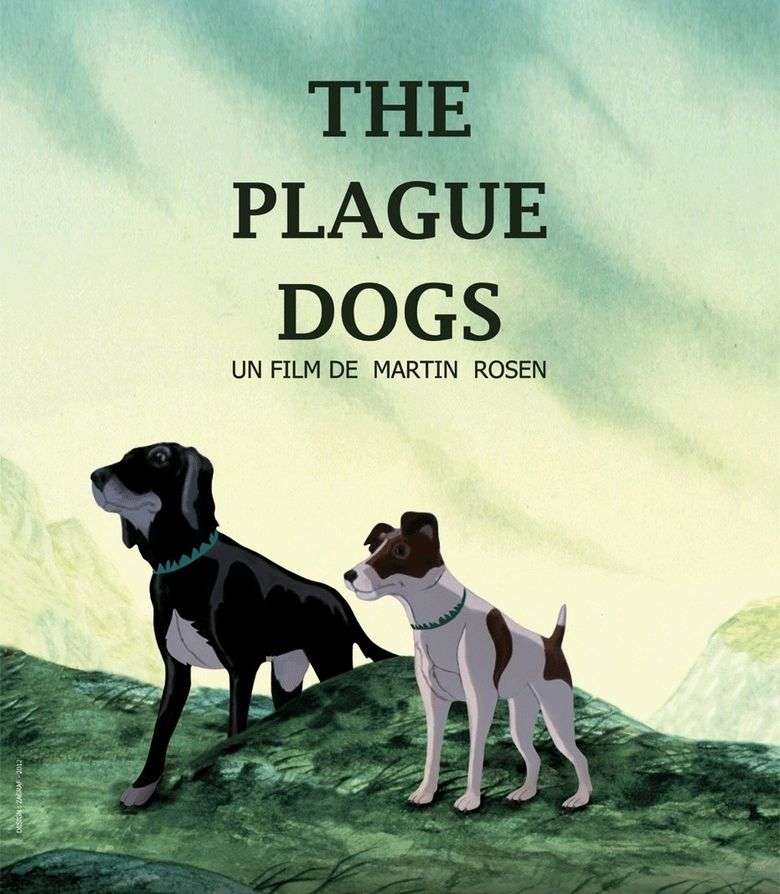
The film is premised on an animal research facility which uses animals like mice, monkeys, and dogs among others for dangerous experiments that result in the death of these animals.
Among the several tortured in the name of Science exist two dogs Rowf and Simon. The duo manage to escape but their freddom is short-lived as they experience the harsh realities of life. An even greater danger looms as their previous captors are hunting them as it is believed that Rowf and Snitter are carriers of a plague virus. Now, it’s the whole world against these two innocent canines.
This is the second film based on a novel by Richard Adams and directed by Rosen. The film highlights atrocities that animals faced in reseach labs whicg was quite prevalent until the 80s and 90s. Rosen has made sure that the animations look as grim as the story itself; the images and visual quality bind the viewer into a gripping and mournful experience. It’s grounded in realism and honest to the problems faced by strays.
Pet owners often revere dogs as dear as their own children but Rowf and Snitter are abandoned and wanted by none. Not only do the humans torture them but also go after their lives are presumably infecting them in the process. They might be free from the torture but have no one to turn to. This remorse is reflected when Snitter says, “They’re not masters, Rowf. I had a master once, and I know. Whatever the White-coats are, they’re not masters.”
However, despair doesn’t take away their nobility and innocence. All we can say is that the film will make you angry in your bones, it’ll sadden your heart and make your eyes wet, but it’ll also make you love those Paw-some creatures a lot more than you already do.
When the Wind Blows (1986)
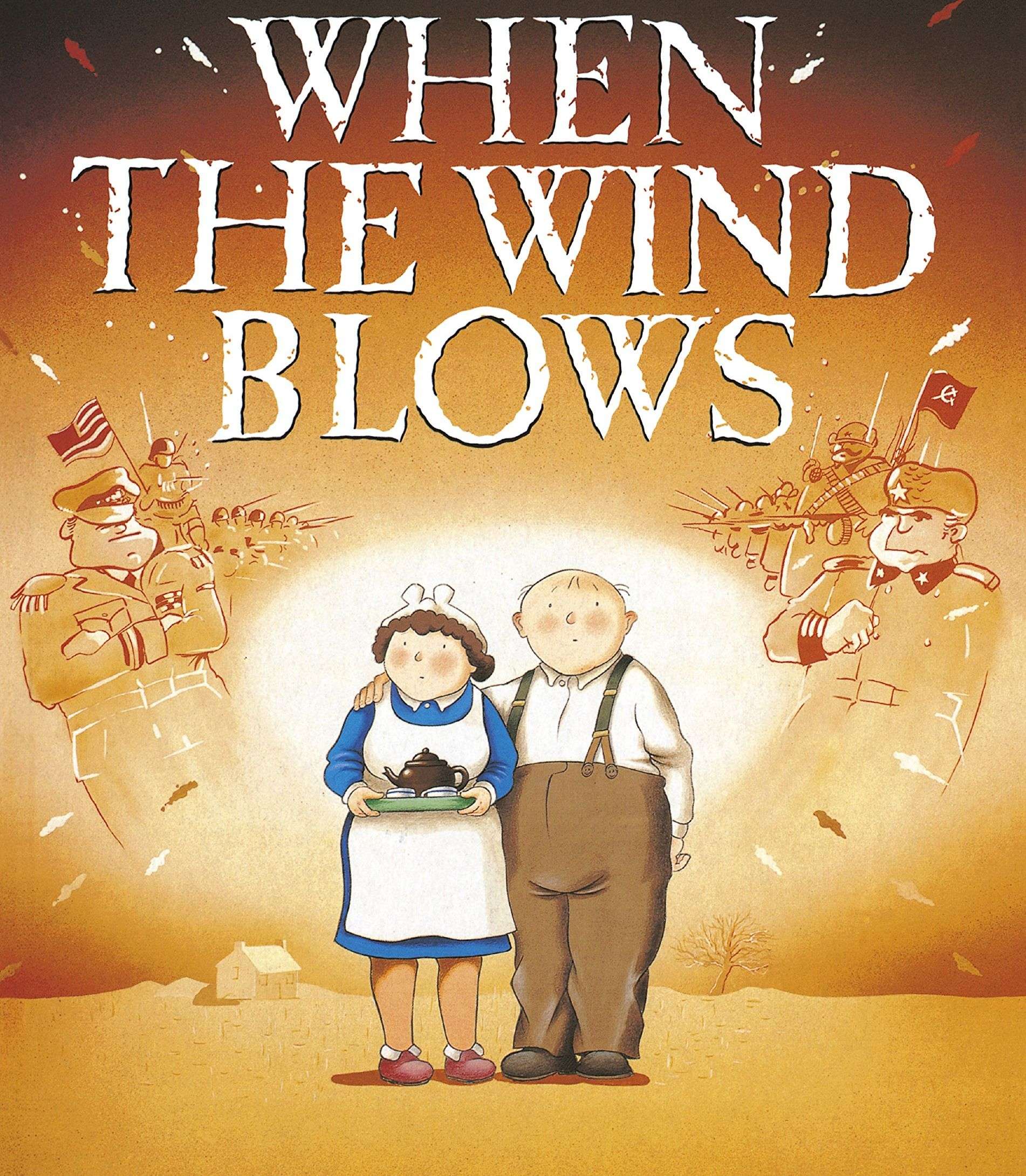
An old and happy couple Jim and Hilda Bloggs live in Sussex of Southeast England during a time when their nation is ina nuclear tussle with the Soviet Union, expecting a nuclear strike in three days.
The Bloggs take all measures directed by the government to protect themselves but everything takes a turn for the worse. The couple gets afflicted with radiation poisoning, but their resolve to survive is unfathomable.
The shockwaves from the inter-continental ballistic missile indeed destroyed their home, but not their hopes and the will to go back to normalcy. Jim remains optimistic that help shall arrive, but will it?
Jimmy Murakami directed this animated film based on Raymond Bigg’s comic book named ‘When the Wind Blows.’ The wind here is an indication of the radiation. The story is about a love partnership’s will to survive with each other. Their ever-growing love for one another remains their only weapon to see through the disaster.
Murakami is of Japanese descent and knows well about the peculiarities of life after a nuclear strike. He makes the sweet, comic-book styled animation potent enough for you to fear and hate nukes. The dialogues are chilling, and yet they come with a sense of positivity. The main characters totally rely upon and trust their government until there’s no government and, yet they trust God.
Even amidst the hardships, the film is able to retain a humorous tone in form of the exchange between Jim and Hilda, a loving couple who like any regular couple are often embroiled in petty arguments. In one such instance, Jim in panic screams “ COME BACK YOU STUPID BITCH AND GET IN THE SHELTER!” An offended Hilda who is more angry with her husband’s crude vocabulary than a nuclear strike retorts back with, “How dare you talk to me like that, James! There’s no need to forget your manners just because there’s a war on.”
These little nuances have been so beautifully crafted that by the end of the flick, you’ll wish you had a spouse like Hilda or Jim!
Barefoot Gen (1983)
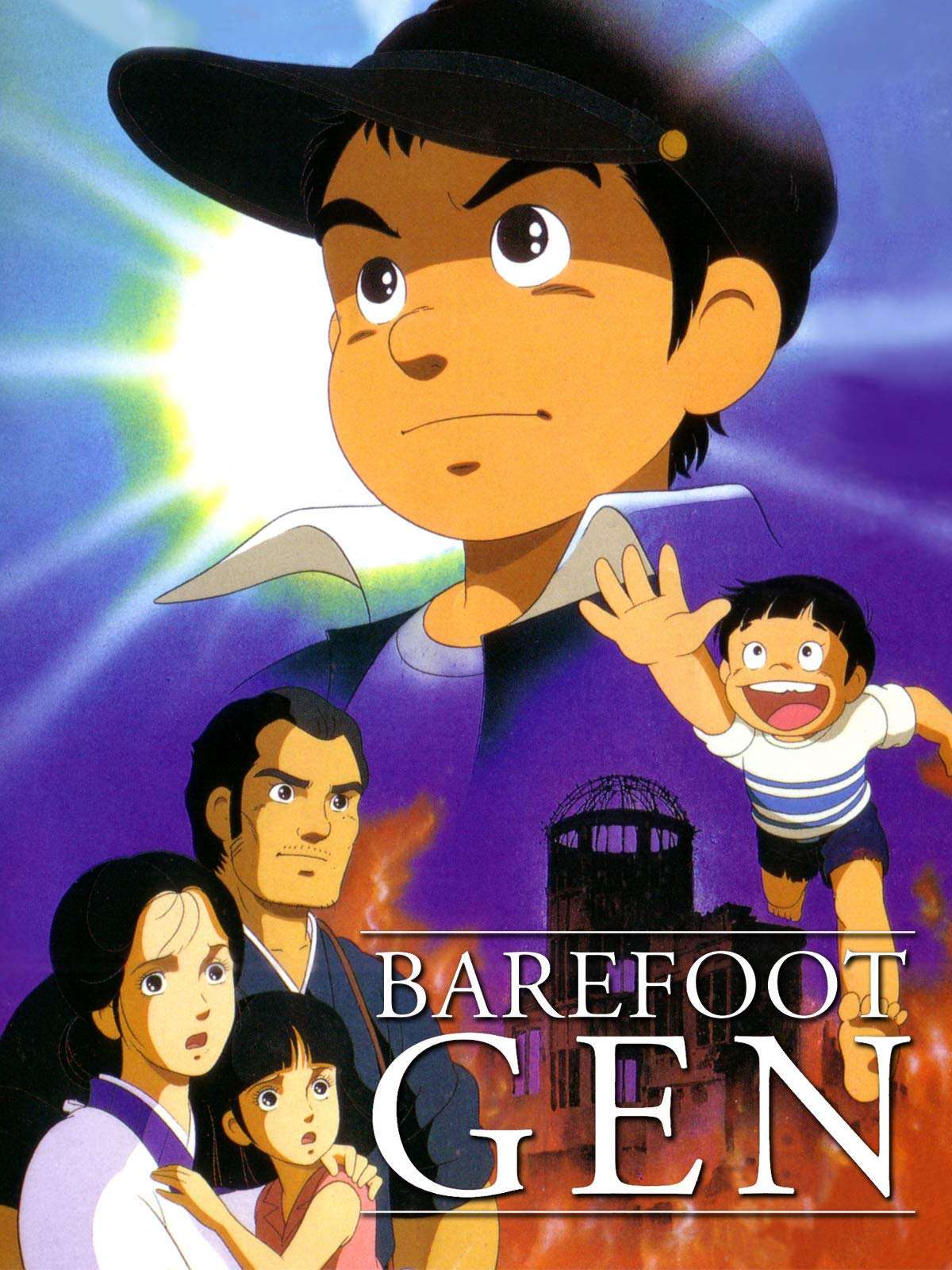
A six-year-old boy Gen is seen living with his family consisting of his father, pregnant mother, and two siblings. They are poor but content with their lives. Gen’s paents despise the war and the economic crisis that is incurred thereafter and prayed the Japanese army will give up their violent ways and opt for peace.
However their hopes for peace is crushed soon after the ‘Little Boy’ is dropped on Hiroshima on the 6th of August, 1945 decimating the city completely. Gen, who survives the blast, sees that most of his family has burnt to death. Some charred and the others imprinted on walls evaporated from the heat exerted in the blasts.
Gen’s mother however, along with his prematurely born sister manage to survive and it is now Gen who must rise to the occasion and keep them alive. It’s a tale of the destruction of a city and the construction of family bonds.
This anime is loosely based on the manga of the same name by Keiji Nakawaza. Some argue that it is Nakawaza’s semi-autobiographical tale, and director Mori Masaki left no stone unturned to keep the adaptation true to its source.
This film was one of the few to have depicted the horrors consequent to the bombings. The shades of the story get continually darker with each subsequent event.
The most heartwarming element of this film remains that it doesn’t play the blame game for the immense destruction instead focuses on civilians who end up becoming the collateral damage in a war they never wanted It’s the low-income families on both sides who lost more than anyone else and the anime seeks to ask one simple question, ‘why?’
Mori’s animation skills might feel a bit dodgy with cartoonish characters and round faces, but it reaches its highest degree when Hiroshima’s sudden destruction is cinematized. A few violent scenes like people jumping into rivers to stop their bodies from burning or maggots feasting on dead bodies only help deepen the film’s cause.
This criminally underrated anime is both heartwrenching and thought-provoking
Grave of the Fireflies (1988)
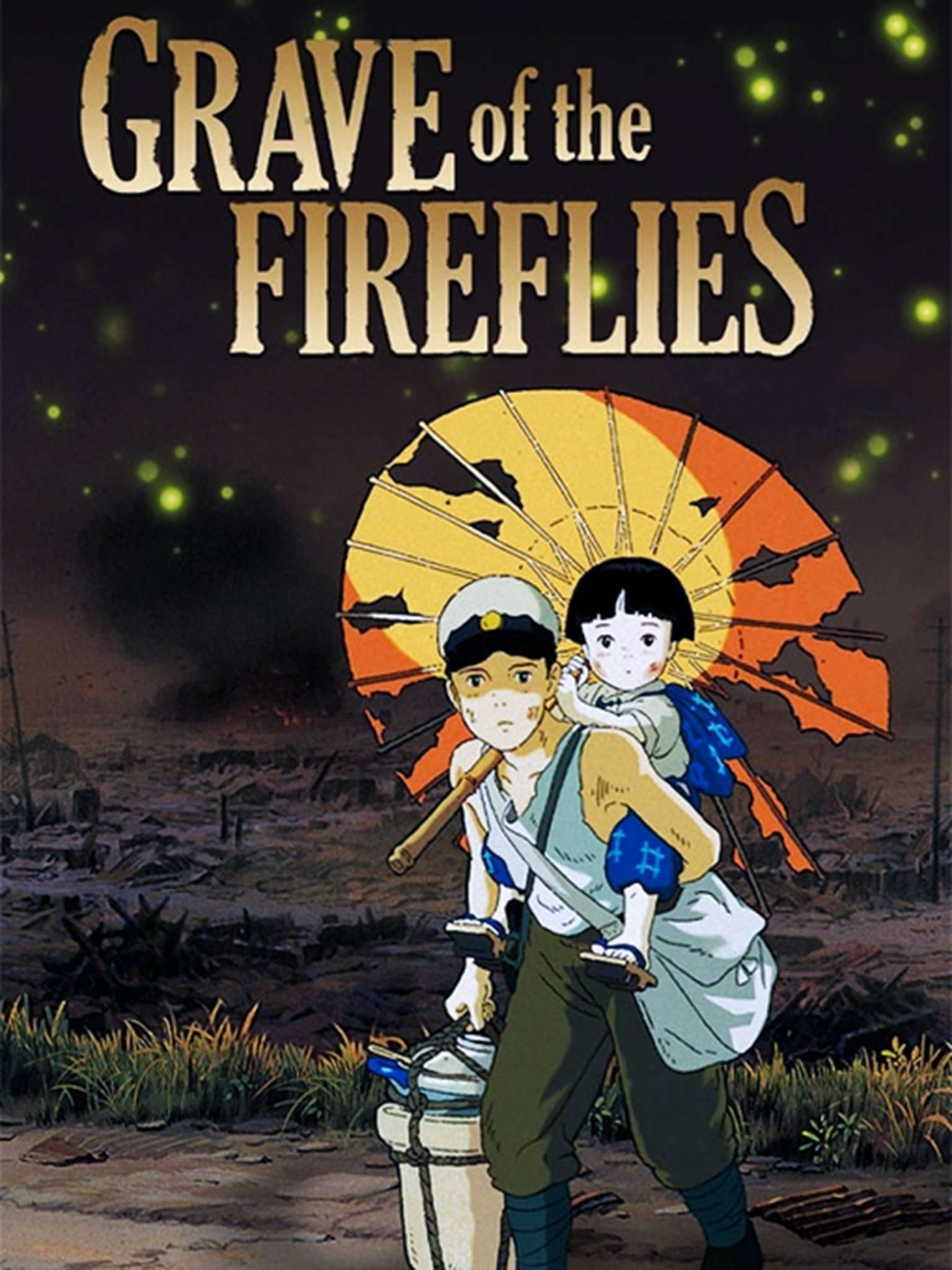
Post the bombings in Hiroshima (August 6th) and Nagasaki (August 9th) the war finally ceased on September 2nd, 1945. The film takes off on September 25th, 1945. In Sannomiya Railway Station, a young boy is seen starving and eventually dies by nightfall.
The janitor removes his body and scans through his belongings to find a tin candy can with ashes and bone fragments. The janitor disposes them and from there rise several fireflies and along with the spirit of a boy Seita and his younger sister Setsuko.
The fireflies, in turn, convert the dark field into a sea of light serving as the backdrop of Seita’s narration of how difficult their lives were constantly struggling for food and shelter along with his sister. Their only moment of pleasure came from watching fireflies at dusk.
This beautifully crafted anime is bound to tug the strings of your heart as it reaches out to the sufferings of the young and orphaned children in a devasted Japan. Isao Takahata’s visual depth became a pioneer in the world of animation.
Grave of Fireflies takes the viewer on a painfully engaging ride into the horrors of war but remains pristine in the portrayal of childish humor and character of its leads. The two kids strive and fight the real-life problems of the world but never fail to put a smile on their faces. The hardships they go through finally ended in death, and it liberated them, becoming free and high-spirited when they turn to spirits.
This heartwarming tale will make you glace at your siblings with a more loving gaze. While it might move a child-viewer, it affects adults differently and deeply because they can really comprehend the emotions and feelings behind the scenes. To say that this film is emotional will be a grand understatement.
The Fox and the Hound (1981)
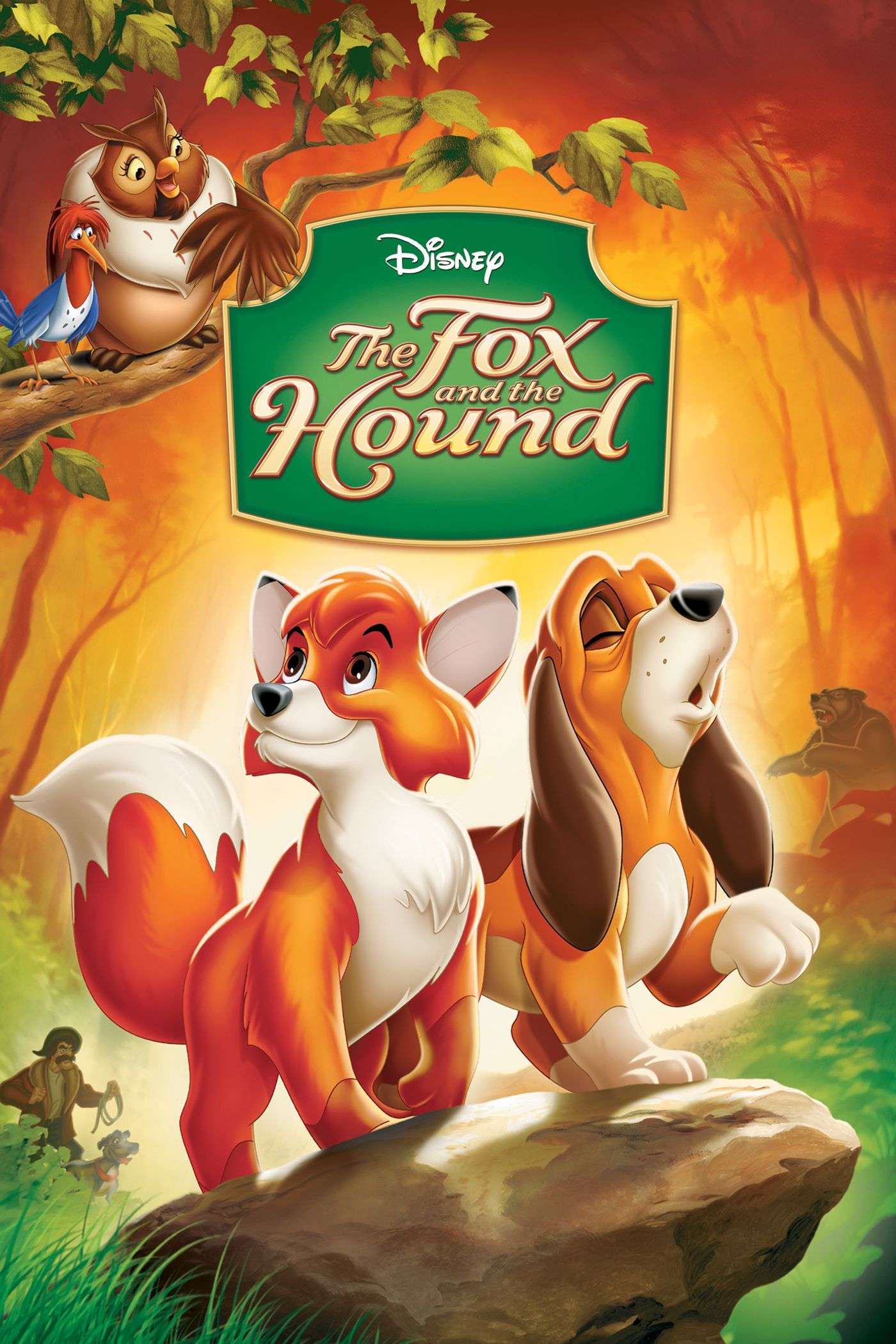
This film starts on a grim note with a mother fox and her baby attempting to escape the hounds and hunters chasing them. The mama fox sacrifices herself to protect her cub. Later, the cub is taken under the wings of Big Mama, an owl.
She arranges for the little fox cub to be adopted by a kind farmer named Tweed who calls him Tod. Her neighbor Slade is a hunter who lives with his hunting dog Chief. He recently brought home a hound pup named Copper. Tod and Copper become friends and vow to remain so forever.
However, not only is this against their innate animalistic instincts, but Slade trains Copper to hunt foxes and other animals. As the two mature by next spring, Copper and Slade become hostile towards Tod. Tweed fears Tod’s safety and leaves him in a nearby reserve. However, Copper, Chief, and Slade plan to poach him in the reserve forest. Will nature and societal pressures prevail over their bonds?
This fable about friendship is a production from Walt Disney is a teaching curve for adults and children alike. It depicts the constant struggle that Tod and Copper have to face while trying to say close to their societal categorization while attempting to uphold the promise of friendship.
In one of the scenes, an adult Copper warns Tod to leave, or else Slade will kill him. In that very moment, the viewer knows that friendship rises above the barrier of species in the animal world and should rise above the barriers of race, religion, and gender in the human world.
The songs in the film are beautiful and hold a lot of meaning, for instance,
“They say you’re both being fools,
You’re breaking all the rules
They can’t understand, the magic of your wonderland.”
Friendship and love are emotions far stronger and holier than ill-conceived notions, and we really hope you have good friends in life; friends you can fall back on in times of need.
Waltz with Bashir (2008)
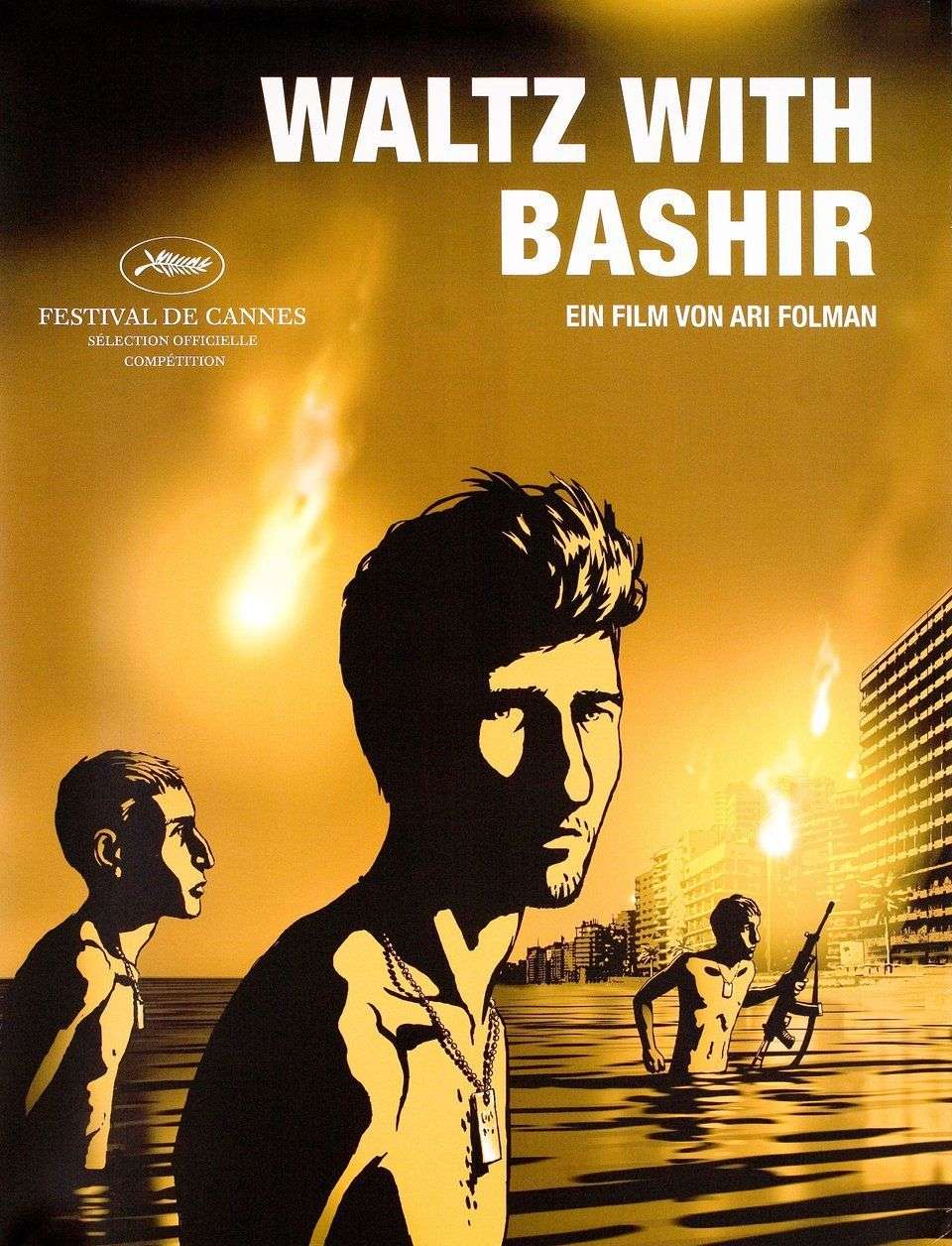
Boaz, a soldier of the Israel Defence Force served in the Lebanon War in 1982, his role being to shoot dogs so as that they wouldn’t alert the unassuming villagers the night his team infiltrated the village.
Since then, he is tormented by nighmares showing 26 dogs chasing after him, running towards his house. Boaz encounters his friend from war Ari Folman in 2006. When he recalls his ordeals to Ari, he doesn’t recall anything from the past when they were engaged in the war.
Ari visits a childhood friend and psychologist, who tells Ari to get in touch with his old soldier-friends as the only way to revive his memories is to speak to them and learn what happened. Folman then interviews his friends from the war, and a few dark memories come back to him.
Waltz With Bashir is a ravaging tale of a man trying to salvage his suppressed memories. It is an animated adult autobiography that completely destroys the conception of what animation can be.
This peculiar film won several awards and nominations, including at the Oscars, Baftas, and Golden Globes. Being a documentary, Folman brings out the grim reality of the war period, especially the Sabra and Shatila Massacre in which a right-wing party massacred 450 to 3600 civilians.
Waltz with Bashir is a fabulous portrayal of a soldier’s psychology and the subsequent traumas they face during and after a war, our memories that is capable of both shielding or damaging us in ways we don’t understand and how suppressing memories become a boon and a bane.
The animated approach at cinematizing a contemporary war and its repercussions is unforgettable, to say the least. Plus, dialogues and music are crafted in a way to make the viewer feel exactly what the animated characters feel, and trust us when we say that the feeling is heavy.
Spirited away (2001)
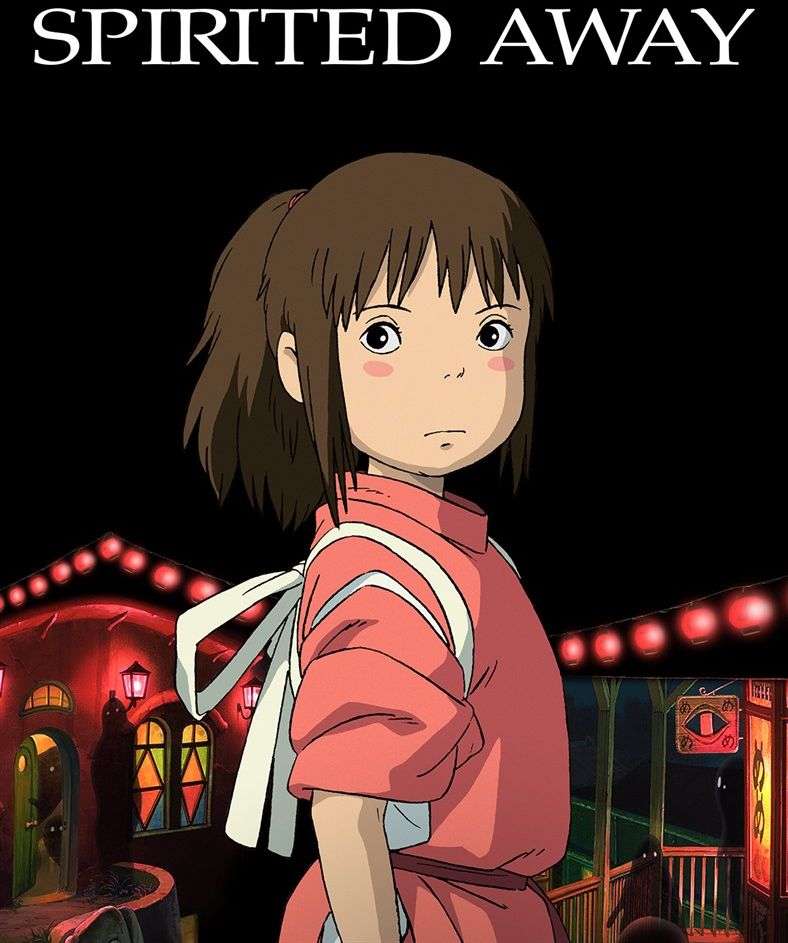
Chihiro and her parents are moving to a new house in the suburbs of Japan, much to Chihiro’s displeasure. As faith would have it, her father takes a wrong turn and they end up in a one-lane road leading to a tunnel. Since turning around was hardly an option, they decide to go further.
The tunnel takes them to a deserted amusement park. It also has a restaurant with great food. There are, however, no staff nor any customers. They decide to eat at the restaurant, but Chihiro is apprehensive and goes off to explore the park. There, she meets a strange boy called Haku, who tells her that her parents might be in danger and they should all leave immediately.
When Chihiro returns to the restaurant, she discovers that her parents have been turned into pigs. Haku tells her that the amusement park is a den of Japan’s gods and spirits, and she must work at the bathhouse of the evil witch Yubaba where all the faceless spirits come to rest. That is the only way she can get back her parents, or else they’ll soon become someone else’s free dinner.
Hayao Miyazaki’s Spirited Away is a story of benevolence, love, and limitless imagination; his vision’s depth is only comparable to great works like Harry Potter. The animation is visually stunning and vibrant, which makes the whole watching experience a treat to the visual senses. The meticulous process of frame-by-frame drawing is clearly visible, and it has been done so gracefully that the film becomes one of the finest animations ever made.
The young protagonist, Chihiro wins with her unshaking resolve to get her parents back. Her generosity and wit are showcased when she tells faceless ghost, “If you want to eat me, eat this first. I was going to save it for my parents, but I think you’d better have it.”
We’d be getting chills if we stopped for a moment and only to imagine the trauma she went through after seeing her parents transformed into pigs and being forced to work in a place full of ghosts. But, this brave little girl is made of sheer dedication and determination. Although she fears her grim situation, it doesn’t stop her from doing the right thing.
Spirited Away is an unforgettable masterpiece that will always remind us of Miyazaki and his perception of emotions.
Felidae (1994)

A tomcat Francis moves into his new house with his master, a romace novelist. Francis discovers a cat’s body with its neck slashed on the second floor. Francis gets suspicious and tries to explore the neighborhood.
He soon finds that his house’s top floor is the meeting point of a cat-cult where members perform ritualistic suicide by throwing themselves on electric wire. There’s another catch: all the other carcasses he found were of cats that were in their heat and ready to mate. However, the cult lets only the strongest and healthiest of cats mate with the females. Francis must do something, lest all will be over.
Felidae is one of the best animations to come out of Germany and it is in no way a film limited for children. The themes explored are deep and dark, including those of racial purity, the Holocaust, euthanasia, all wrapped up in tones of sadism and masochism. It starts as a detective film and outgrows itself to become an action-packed thriller with chases on roof-tops and grisly murders.
Felidae matches the Disney standards and even surpasses at a few specific scenes, but the creators successfully avoid giving it an American undertone. It remains essentially German in look and feel.
If you think that we’ve included this one on our list to please our cat-lovers, then you’re slightly mistaken. Felidae is a bundle of emotions and thrill, spliced together into something inexplicable. Talking about the emotional and tear-jerking aspect would be giving away the climax, and we certainly don’t believe in spoiling a movie. So, watch it to know it, and yes… keep your tissues handy.
The Iron Giant (1999)
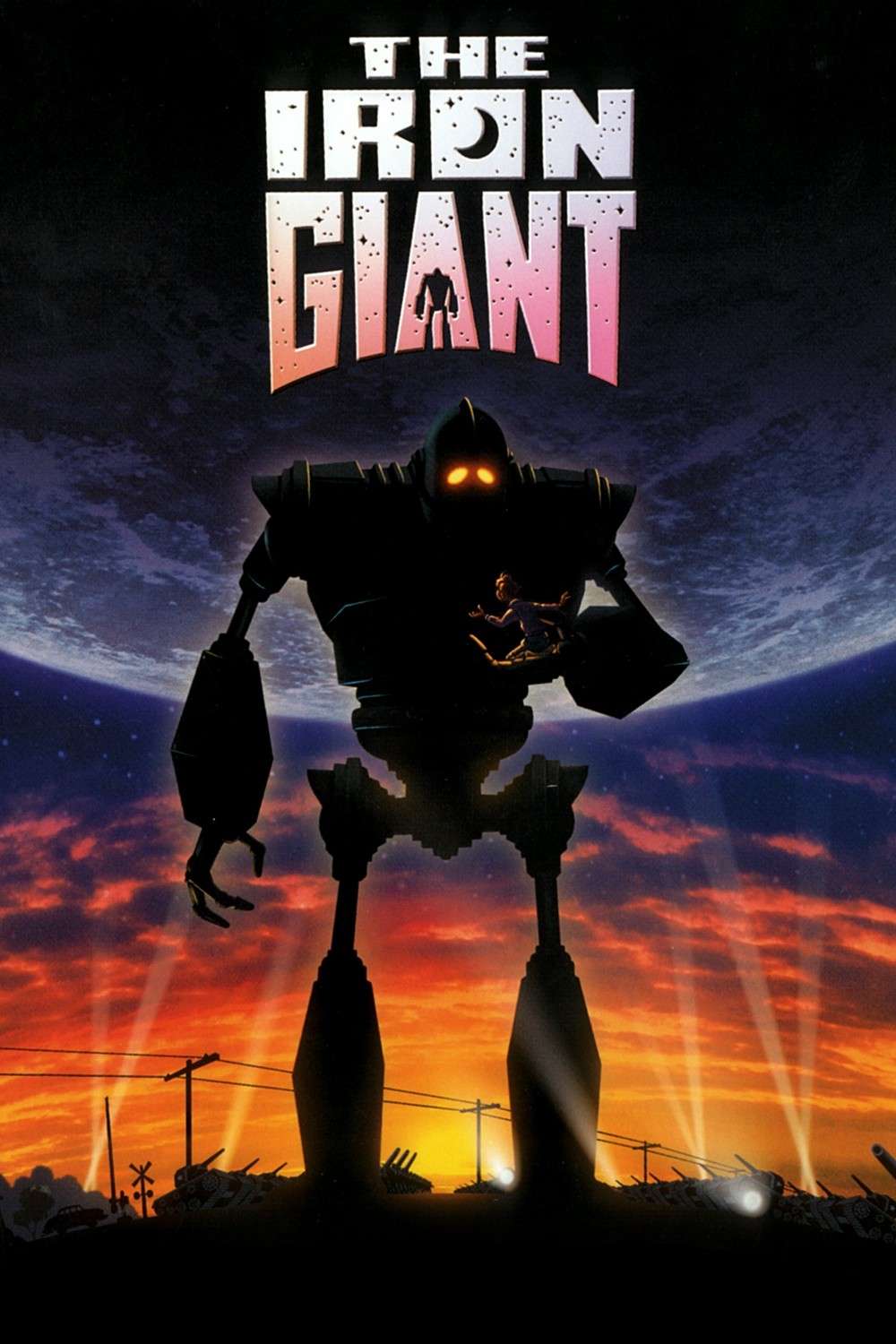
In 1957, shortly post the launch of the Sputnik 1, a giant object from spaces crashes on the coastline of Maine and disappears into the forest near the town of Rockwell. Hogarth Hughes, a young 9-year-old boy, decides to investigate the object and finds a giant iron robot. The robot seems harmless, and Hogarth becomes friends with it.
However, a U.S. government agent named Kent Mansley comes to Rockwell to investigate and finds something fishy about Hogarth and suspects that the child knows something. He rents a room in Hogarth and his widowed mother’s house to keep an eye on the kid. Initially, Hogarth manages to hide the iron giant from Mansley, but soon falters. The xenophobic Mansley, in order to kill iron giant, does something that puts the town’s population in mortal danger. How will the town survive?
This animation is a tale of sacrifice, courage, righteousness, and friendship. The Iron Giant proves to be more humane than many humans shown in the film, and that will forever remain its beauty. Right from its release, it garnered a cult following despite flopping at the box office.
A few critics claim that the film was ahead of its time. However, the bond of friendship and affection that Hogarth and the iron giant share is out worldly, the two friends go to great extents in order to save each other, not caring about putting their lives in danger to protect the other. It’s as if director Brad Bird made The Iron Giant from a child’s perspective, and he has put elements of happiness, action, suspense and humor in the story whilst keeping it visually rich.
By the time the film ends, you are bound to have beads of water in your eyes, and if you’re tough-hearted, then you’ll settle for a wide smile as the credits roll. If you experience none of these, your heart is probably made of stone.
